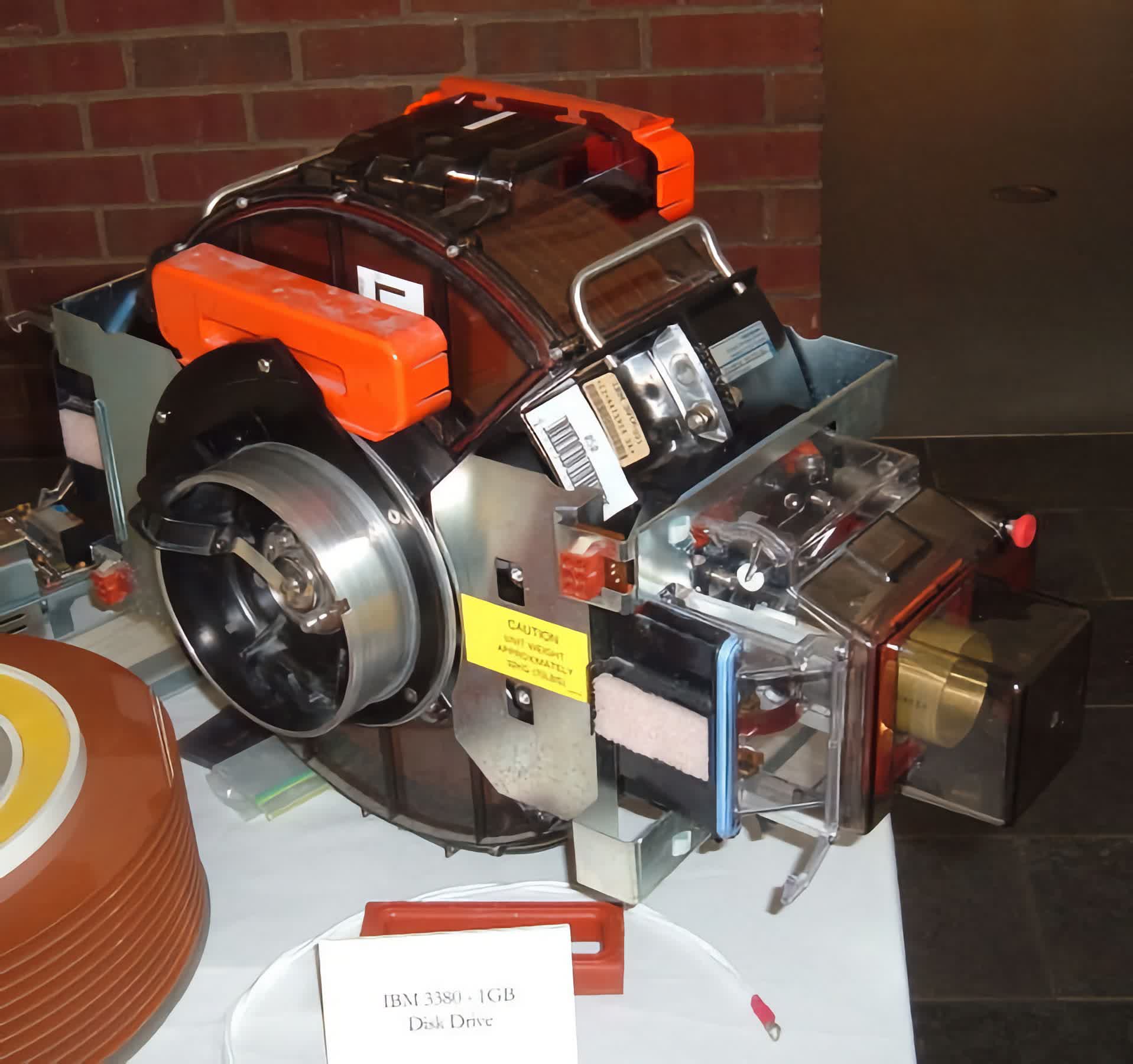A little background and more context about this trivia
The IBM 3380 Direct Access Storage Device (DASD) marked the pinnacle of 14-inch disks in 1981. Utilizing nine platters, it broke the 1 gigabyte barrier with a total capacity of 1,260 MB and ultimately reached 2.52 GB when two HDAs were paired. A three-capacity version was offered in 1987.
The IBM 3380 was revolutionary not just for its storage capacity but also for its impact on the data storage industry. It represented a significant leap in technology, providing businesses with unprecedented storage capabilities that were essential for the growing demands of data processing in the 1980s.
One HDA (as pictured) cost approximately $50,000, weighed 64 pounds, and the set was stored in the largest cabinet ever used for disks, measuring one meter wide, one meter deep, and two meters high. The IBM 3380 offered customers the ability to store "up to 2.52 billion characters of information," which was four times the amount previous IBM storage devices were capable of. This came at a hefty cost.
The IBM 3380 was available in different models with various feature sets depending on customer requirements (e.g., control functions and fixed head technology). Based on those requirements, IBM 3380 storage devices were sold for $97,000 to $142,000 each, in 1980s dollars. The high cost of the IBM drive was justified by the substantial increase in storage capacity it provided. It played a crucial role in industries that required large-scale data storage, such as banking, telecommunications, and scientific research.
By 1991, IBM had squeezed 1 GB into the 3.5-inch, eight-platter 0663 Corsair HDD, and by 2018, you could purchase a 16 TB 3.5-inch Seagate hard drive off the shelf, which equates to the storage space of more than 10,000 IBM 3380 HDAs.
